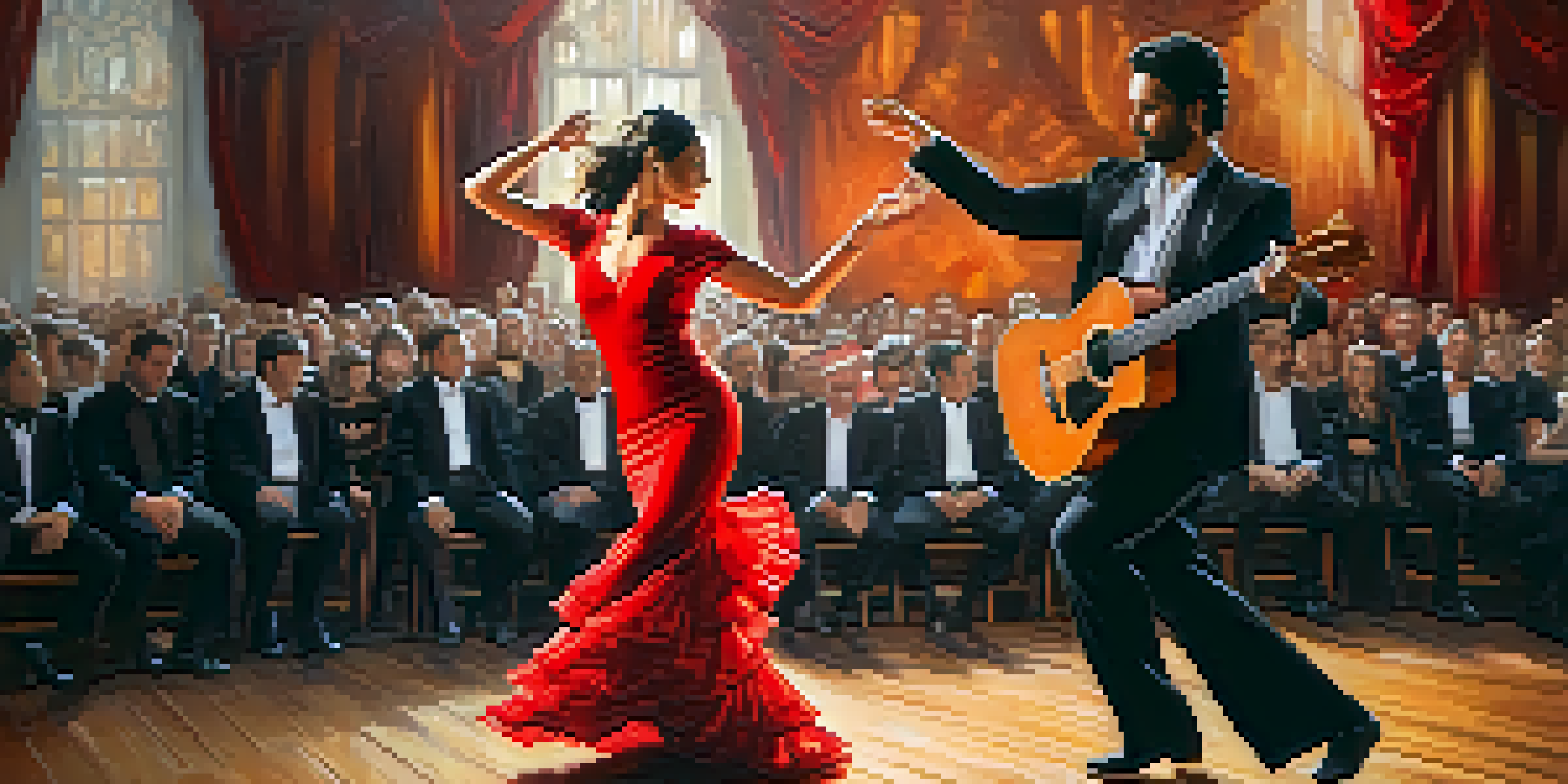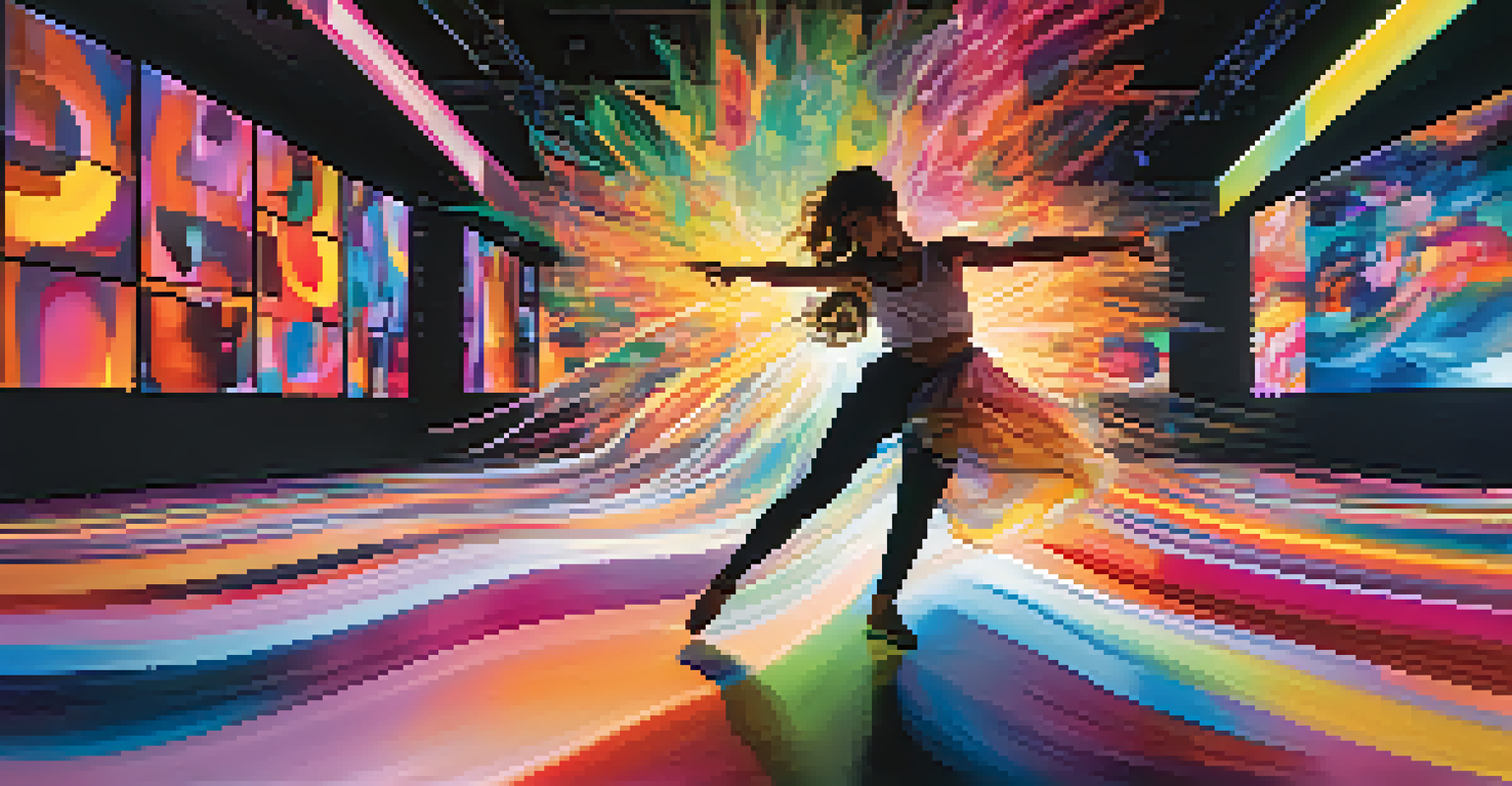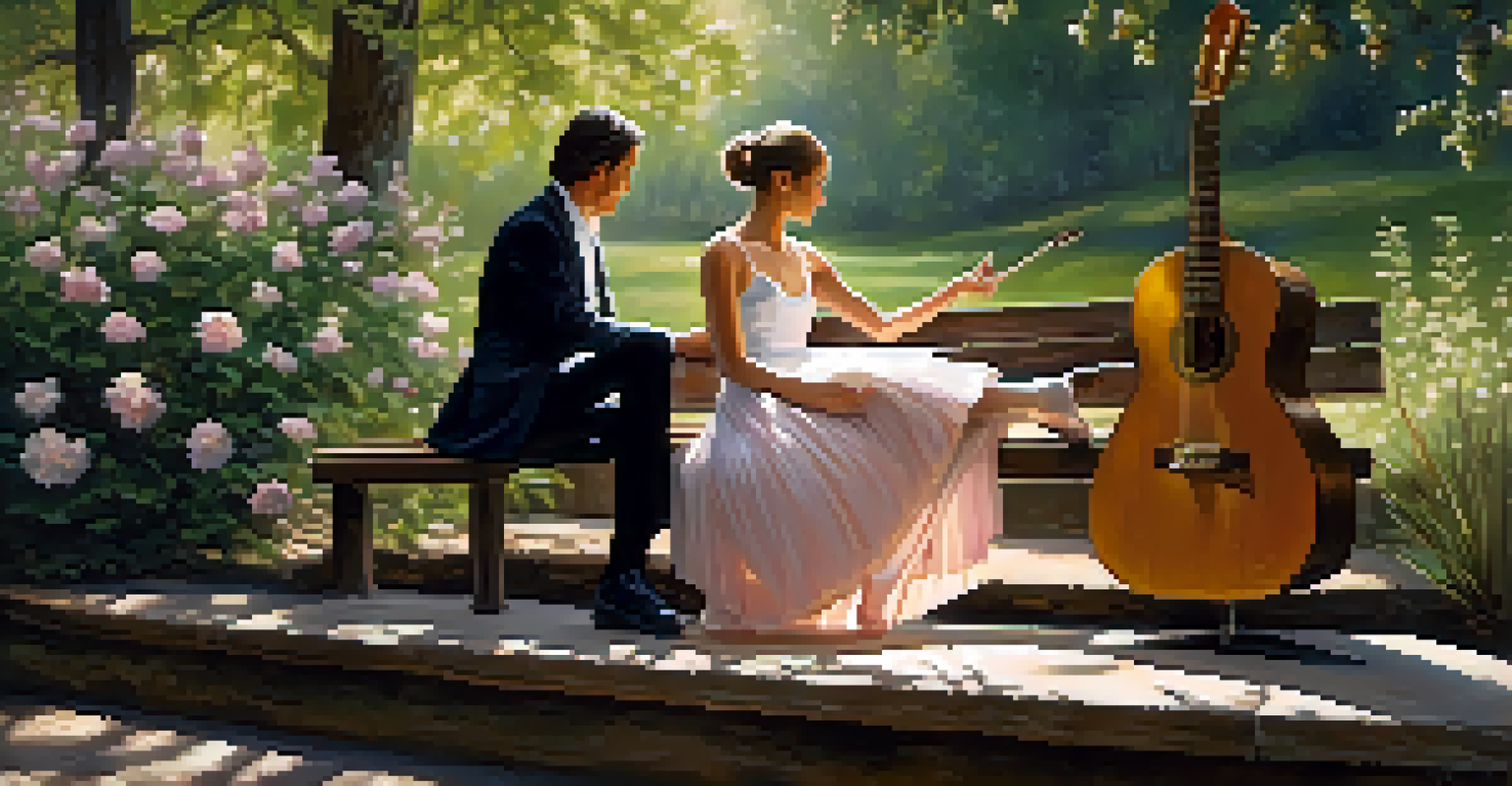Guitar and Dance: Collaborations Between Musicians and Dancers

The Magic of Music and Movement Combined
Music and dance have shared a deep connection throughout history. When a guitarist strums a chord, it can inspire a dancer to move in ways that words alone cannot express. This synergy between guitar melodies and dance rhythms creates a powerful and captivating experience for audiences.
Music can change the world because it can change people.
For instance, think about how a flamenco guitarist’s passionate playing can evoke the fiery spirit of a dancer's performance. The intricate footwork and hand movements of the dancer are often responses to the guitar's emotional highs and lows, forming a dynamic storytelling duet.
Ultimately, this collaboration isn't just about sound and movement; it's about feeling. Both guitarists and dancers draw from the same emotional well, allowing them to create something beautiful and compelling together.
Historical Roots of Guitar and Dance Interactions
The relationship between guitar and dance is not a modern phenomenon; it traces back to various cultural traditions worldwide. From the Spanish flamenco to Brazilian samba, different genres have emerged where guitarists and dancers work harmoniously. This historical interplay showcases how music has always been a vital part of social and cultural expressions.

In the early days of folk music, dancers relied heavily on guitarists to set the pace and mood of their performances. The rhythmic strumming of a guitar often dictated the steps taken by dancers, making it a crucial component of many traditional celebrations.
Music and Dance: A Timeless Duo
The synergy between guitar melodies and dance rhythms creates a captivating experience that transcends mere performance.
These deep-rooted connections have paved the way for innovative collaborations in contemporary performances, blending traditional styles with modern influences to keep the art form alive and evolving.
Famous Collaborations You Should Know
Throughout history, there have been countless collaborations between guitarists and dancers that have left a lasting mark on the arts. One notable example is the partnership between legendary guitarist Paco de Lucía and flamenco dancer Antonio Gades. Their performances beautifully fused intricate guitar work with expressive dance, pushing the boundaries of traditional flamenco.
Dance is the hidden language of the soul.
Another inspiring collaboration is between modern dancer Martha Graham and composer Aaron Copland. Although not a guitarist, Copland's music has often been adapted for guitarists, showcasing how different musical styles can influence dance. Their partnership sparked a new era of interpretation in dance, proving that collaborations can transcend specific instruments.
These examples highlight how the creative synergy between musicians and dancers can lead to groundbreaking performances that resonate across generations.
The Role of Improvisation in Guitar and Dance
Improvisation plays a significant role in the collaboration between guitarists and dancers. Much like a conversation, both parties respond to each other's cues, creating a spontaneous and unique performance. This unpredictability often leads to exhilarating moments that can surprise both the performers and the audience.
For example, during a live performance, a guitarist might experiment with a new riff, prompting the dancer to adapt their movements on the spot. This dance of give-and-take not only showcases the talent of each artist but also enhances the overall experience for everyone involved.
Cultural Roots Shape Collaboration
Historical traditions influence how guitarists and dancers interact, resulting in unique styles and innovative performances.
Embracing improvisation can lead to unexpected artistic breakthroughs, making each performance a one-of-a-kind event that highlights the creativity and talent of both musicians and dancers.
Cultural Influences on Guitar and Dance Collaboration
Cultural backgrounds greatly influence how guitarists and dancers collaborate, shaping their styles and techniques. Different regions of the world have distinct musical and dance traditions that often intersect, allowing for unique expressions. For instance, the interplay between African rhythms and guitar melodies has given rise to vibrant dance forms like West African dance.
In contrast, the classical guitar tradition has influenced ballet, where the guitar often accompanies elegant movements. This cross-pollination enriches both forms, allowing artists to explore new territory and create innovative performances.
By embracing diverse cultural influences, artists can expand their creative horizons and contribute to a richer, more varied artistic landscape.
The Impact of Technology on Collaborations
In today's world, technology has transformed how guitarists and dancers collaborate. With the rise of digital platforms, artists from different parts of the globe can connect and create together, regardless of physical distance. This has opened up exciting opportunities for innovative collaborations that were once unimaginable.
For example, musicians can record their guitar parts and share them online, allowing dancers to choreograph routines based on the music. This level of collaboration fosters creativity and allows for a greater exchange of ideas between disciplines, leading to fresh and exciting performances.
Technology Expands Artistic Horizons
Digital platforms enable global collaboration, allowing artists to create and share their work in new and exciting ways.
Technology not only enhances collaboration but also broadens the audience reach, allowing more people to experience the magic of guitar and dance partnerships.
Future Trends in Guitar and Dance Collaborations
As we look ahead, the future of guitar and dance collaborations is brimming with potential. Emerging genres and styles are constantly evolving, creating new avenues for artists to explore. For instance, the fusion of electronic music with traditional guitar and dance forms is gaining popularity, offering exciting possibilities for innovative performances.
Moreover, as more artists become aware of the importance of inclusivity and diversity, we may see an increase in cross-cultural collaborations that celebrate various art forms. This can lead to a rich tapestry of performance styles, showcasing the beauty of different traditions coalescing into something new.

With creativity and technology at their disposal, the future of guitar and dance collaborations is likely to be as dynamic and captivating as ever, inviting audiences to experience these art forms in fresh and exciting ways.